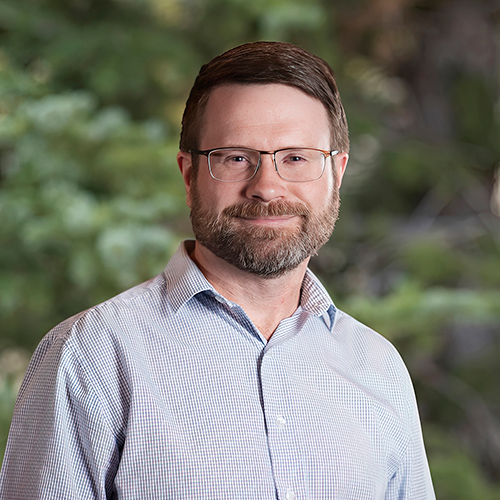
Mr. Eron Dodak is a licensed geologist and hydrogeologist with 23 years of environmental consulting experience. He has managed a variety of projects ranging from small site assessments to large sediment investigations under RCRA and state regulatory programs. He has prepared expert opinions and provided litigation support focused on identifying contaminant sources and pathways. Mr. Dodak has also performed groundwater flow and solute transport modeling, using both deterministic and stochastic techniques.
Mr. Dodak has extensive experience managing and leading soil, groundwater, sediment, and surface water investigations at sites throughout the United States, using a wide variety of sampling methodologies. He has characterized complex sites affected by petroleum hydrocarbons, wood-treating chemicals, chlorinated solvents and other volatile organic compounds (VOCs), pesticides, PCBs, perfluorochemicals, and metals to support remedial investigations and feasibility studies.
Mr. Dodak has conducted a broad range of hydrogeologic data analyses including aquifer testing, tidal influence studies, and capture zone analyses, and developed conceptual site models for complex sites with multiple groundwater zones. He has led investigations on sites with complex hydrogeologic systems that have multiple groundwater zones with both nonaqueous-phase liquid (NAPL) and dissolved-phase constituents. Mr. Dodak has designed remediation extraction wells with capacities of up to 500 gallons per minute. He has also supported groundwater remediation at a number of sites affected by chlorinated solvents and other VOCs, petroleum hydrocarbons, metals, and perfluorochemicals.
M.S., Geology, University of North Dakota, Grand Forks, North Dakota, 1996
B.S., Geology, Portland State University, Portland, Oregon, 1993
Registered Geologist, Oregon (No. G2023)
Licensed Hydrogeologist and Geologist, Washington (No. 2643)
Licensed Professional Geologist, Minnesota (No. 57353)
Registered Professional Geologist, Georgia (No. PG2291)
Hazardous Waste Operations and Emergency Response 40-Hour Certification (1998; refreshers 2001–current)
Hazardous Waste Operations and Emergency Response Supervisor 8-Hour Certification (2001)
First Aid/CPR/AED Training (2001–present)
Confined Space Entry (2007)
DOT HAZMAT Training (2013)
GPS Mapping for GIS with TerraSync and Pathfinder Office (2007)
National Ground Water Association
Eron Dodak, R.G., L.H.G. Senior Science Advisor
Mr. Eron Dodak is a licensed geologist and hydrogeologist with 23 years of environmental consulting experience. He has managed a variety of projects ranging from small site assessments to large sediment investigations under RCRA and state regulatory programs. He has prepared expert opinions and provided litigation support focused on identifying contaminant sources and pathways. Mr. Dodak has also performed groundwater flow and solute transport modeling, using both deterministic and stochastic techniques.
Mr. Dodak has extensive experience managing and leading soil, groundwater, sediment, and surface water investigations at sites throughout the United States, using a wide vari...
Mr. Eron Dodak is a licensed geologist and hydrogeologist with 23 years of environmental consulting experience. He has managed a variety of projects ranging from small site assessments to large sediment investigations under RCRA and state regulatory programs. He has prepared expert opinions and provided litigation support focused on identifying contaminant sources and pathways. Mr. Dodak has also performed groundwater flow and solute transport modeling, using both deterministic and stochastic techniques.
Mr. Dodak has extensive experience managing and leading soil, groundwater, sediment, and surface water investigations at sites throughout the United States, using a wide variety of sampling methodologies. He has characterized complex sites affected by petroleum hydrocarbons, wood-treating chemicals, chlorinated solvents and other volatile organic compounds (VOCs), pesticides, PCBs, perfluorochemicals, and metals to support remedial investigations and feasibility studies.
Mr. Dodak has conducted a broad range of hydrogeologic data analyses including aquifer testing, tidal influence studies, and capture zone analyses, and developed conceptual site models for complex sites with multiple groundwater zones. He has led investigations on sites with complex hydrogeologic systems that have multiple groundwater zones with both nonaqueous-phase liquid (NAPL) and dissolved-phase constituents. Mr. Dodak has designed remediation extraction wells with capacities of up to 500 gallons per minute. He has also supported groundwater remediation at a number of sites affected by chlorinated solvents and other VOCs, petroleum hydrocarbons, metals, and perfluorochemicals.
- Site Assessment
- Environmental Monitoring
- Hydrogeology
- Remedial Design
- Site Investigation
- Groundwater Monitoring
- Sediment Investigation
- Vapor Intrusion
- Litigation Support
- Environmental Modeling
- Groundwater Modeling
- Corporate Support


